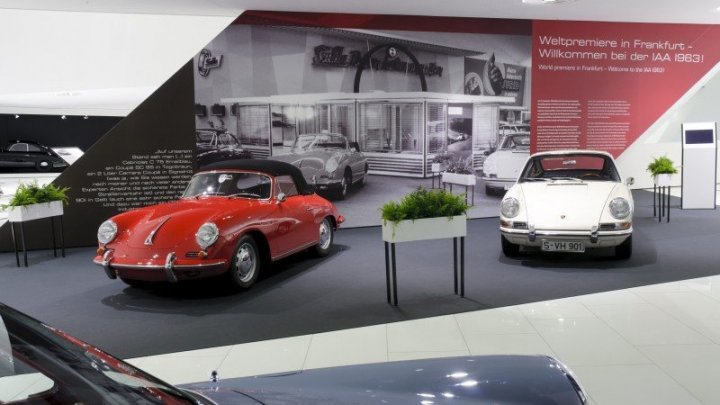Engine-revving exhibit celebrates 70 years of Porsche brand
 foto: carrevs.daily.comd
foto: carrevs.daily.comd
'The Porsche Effect' at LA's Petersen Automotive Museum highlights the history and significance of the Porsche car company - from design, to engineering, to racing.
The new exhibit, organised in partnership with Porsche Cars North America, is claimed to be the most comprehensive Porsche display outside of its headquarters in Stuttgart, Germany.
It's also the largest exhibit the Petersen Automotive Museum has ever staged.
On display is an engine-revving collection of cars, historical documents and artefacts.
The aim is to show the evolution of the German brand, from its early days as an engineering house, to its modern-day road and race cars.
Terry Karges from the Petersen Automotive Museum says Hollywood played a role in the brand's success.
"Porsche actually became important in Germany because of Hollywood," he says.
"When the Hollywood stars started buying and driving Porsche, it became a very popular car in Germany.
"Until then, they weren't all that successful, but it also meant that all of the people of Los Angeles wanted to start driving what the stars were driving."
Co-curator Brittanie Kinch says the full story of the brand is explored in various exhibit sections.
"The Porsche Effect has several sections," she says.
"The first is Elements of Style. The second is Zuffenhausen and Beyond, which talks about Porsche places and the home in Germany. The third is Innovation Through Competition, the fourth, Extended Family, and the final is Word, Image, Object, which documents how culture has really reciprocated the Porsche identity through arts, design, literature and clubs and organizations."
Klaus Zellmer, the president and CEO of Porsche Cars North America, says the exhibit was over a year in the making.
He's now excited to share the brand's history with the world.
"We consider many of the cars that are around - ours, but also others - to be pieces of art and witnesses of some decades that produce some technology that was far ahead of its time," he says.
The first vehicle to bear the Porsche name was registered on 8 June 1948.
Key vehicles on display include this 1949 356-2 'Gmund Coupe'. Experts say the rare handmade car is worth about a million dollars today. Only 40 to 50 were ever made.
This 1964 Porsche 901 was actually the first 911. The name was soon changed from '901' to the now infamous '911'.
The design proved so enduring that the basic concept remains unchanged to this day.
The Porsche 911 was presented to the public for the first time in 1963. According to the company, it's now been built over a million times.
This 1955 Porsche 550 1500 RS Spyder was specifically designed for racing.
It's aluminum body, tube-frame chassis and hand drilled construction reduced weight, while the 110-horsepower engine gave race-winning performance.
"I think the fascination with Porsche comes in the design and the engineering, but also in this persistence in pursuit of improvement," says Pete Stout, editor-in-chief of quarterly Porsche-focused journal '000 Magazine.'
"And I think that's a little bit how we want to see ourselves as humans."
In attendance at the exhibit's VIP reception is long-time Porsche driver and actor, Patrick Dempsey.
"I just love Porsche. I'm an enthusiast, I'm a fan, I'm a racer, I think all of those things, like most people here tonight," says Dempsey.
"You see the 70 years of history and the evolution, the technology, the innovation, the tradition, all of that is here at the Petersen Museum and it's starting a year-long exhibition which is going to be fun for people to come and see and get a sense of how beautiful these cars are in person."
'The Porsche Effect' runs at Los Angeles' Petersen Automotive Museum till 27 January 2019.